Air travel can be tough on the environment. But don’t worry – you can still fly while being eco-friendly. You can take simple steps to shrink your carbon footprint when you travel by plane.
By making smart choices about your flights and packing, you can cut your emissions by up to 50%.
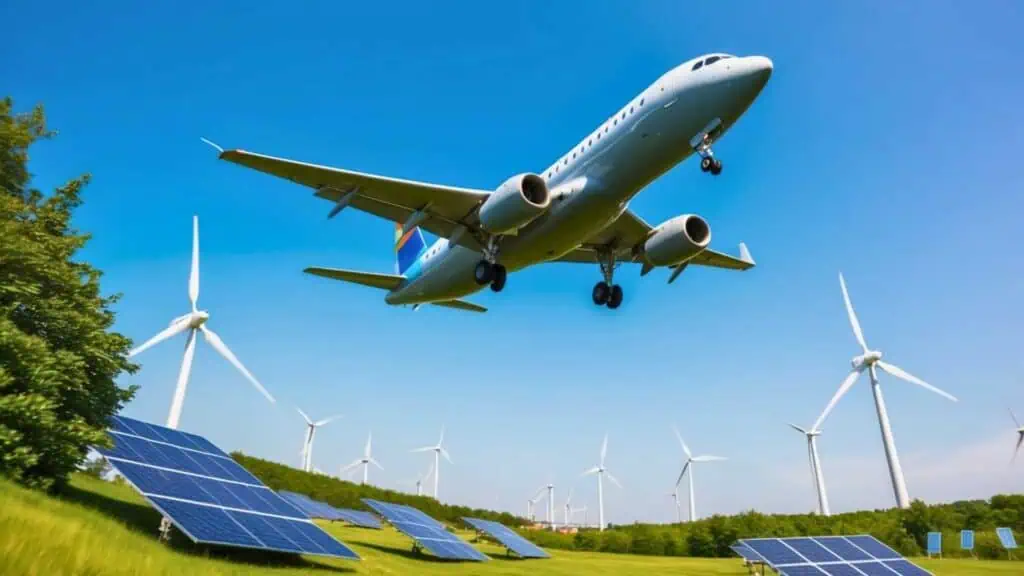
Want to fly greener?
- Choose direct flights on fuel-efficient planes.
- Pack light and bring your own snacks and water bottle.
- Choose economy seats—they use less space and fuel per person.
- When you arrive, use public transit or walk to get around.
Small changes add up to big impacts for the planet.
Contents
The Impact of Aviation on the Environment
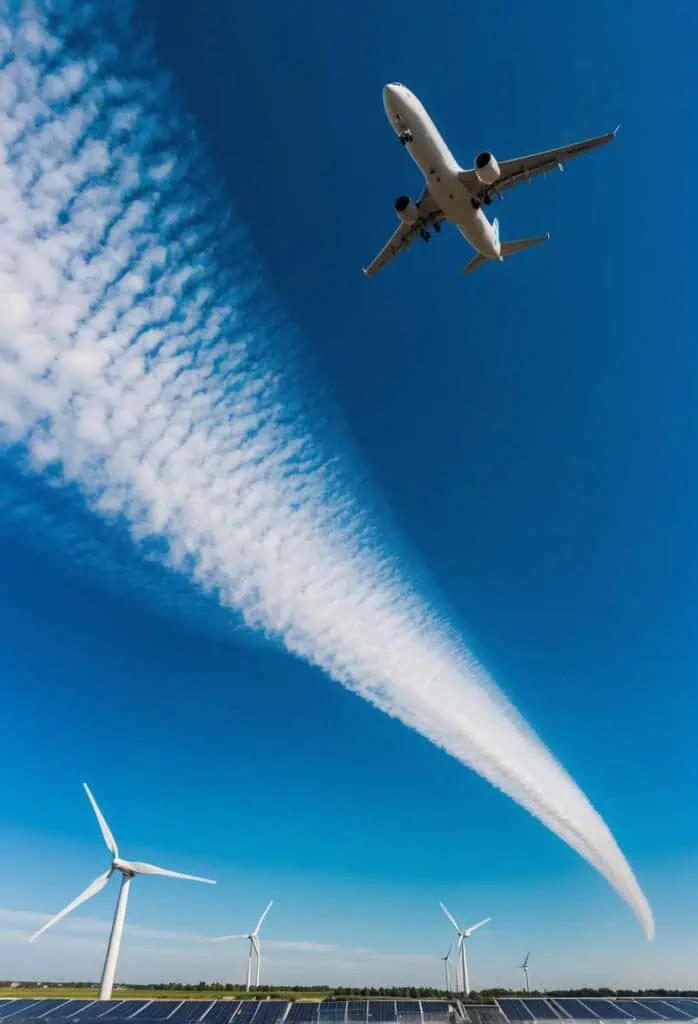
Air travel has a big effect on our planet. Planes release gases that warm the Earth and leave trails in the sky that change the weather. Let’s look at how flying impacts the environment.
Understanding Aviation’s Carbon Emissions
When planes fly, they burn fuel and release carbon dioxide. This gas traps heat in the air and makes the Earth warmer. Planes also give off other gases that add to this warming effect.
Airlines use a lot of fuel. A flight from New York to London can burn over 20,000 gallons of fuel. That’s enough to fill up your car about 1,000 times! All this fuel burning adds up. Flying makes about 3% of the world’s carbon emissions each year.
Some airlines are trying to use cleaner fuels made from plants or waste. These fuels can reduce carbon, but they’re still imperfect.
Global Warming and Climate Change
The gases from planes contribute to global warming, which means the Earth gets hotter over time. As it warms, we see big changes in weather patterns.
You might notice:
- More storms and floods
- Longer droughts
- Melting ice at the poles
- Rising sea levels
These changes can harm plants, animals, and people. In some places, they can make growing food and finding clean water more difficult.
Flying less can help slow down these changes. Choosing airlines that use cleaner tech can make a difference when you fly.
Contrails and Their Effect on Climate
Have you seen the white lines planes leave in the sky? These are called contrails. They might look pretty, but they can also affect the weather.
Contrails are tiny ice crystals that form when hot engine exhaust meets cold air high up. They sometimes disappear quickly, and other times, they spread out and form thin clouds.
These clouds can trap heat close to Earth or reflect sunlight back to space. Scientists are still studying how much contrails change the climate. Some think they might warm the Earth even more than the carbon dioxide from planes.
Airlines are looking for ways to avoid creating contrails. They might change flight paths or altitudes to fly through drier air, where contrails don’t form as easily.
Strategies for Reducing Your Carbon Footprint
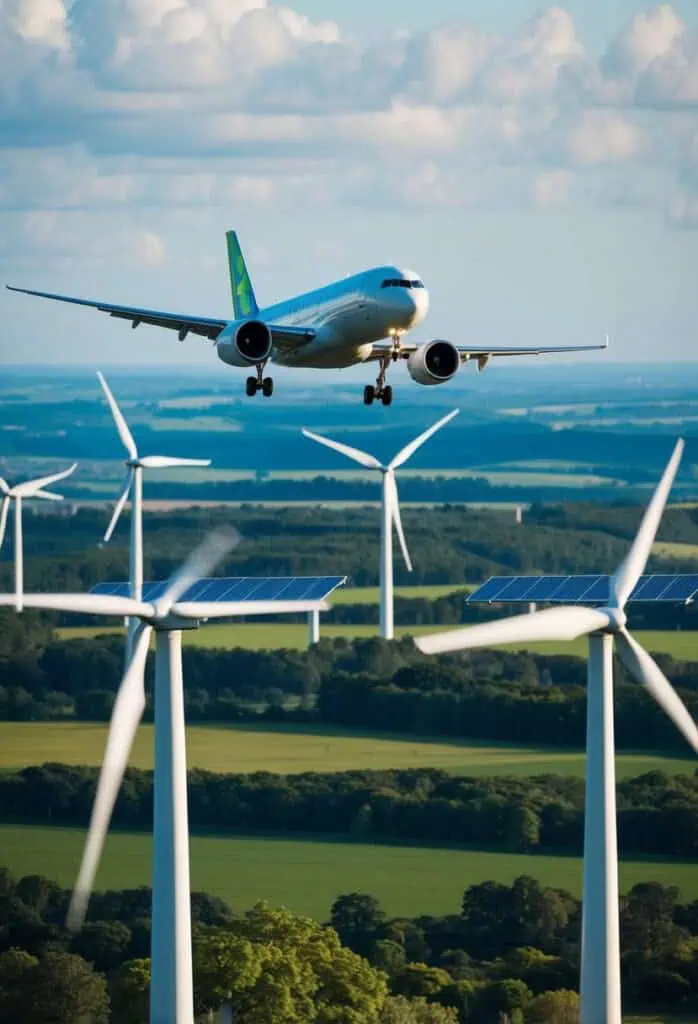
You can cut your air travel emissions in several ways. By making smart flight choices and considering alternatives, you’ll shrink your carbon footprint while still reaching your destination.
Choosing Direct Flights
Pick direct flights when you can. They use less fuel than flights with stops. Direct routes mean planes spend less time in the air and burn less fuel during takeoff and landing.
Look for airlines that use newer, more fuel-efficient planes. These aircraft often use less fuel per passenger. Some airlines share info about their fleet’s efficiency on their websites.
When booking, compare the carbon emissions of different flight options. Many booking sites now show this information. When possible, choose the flight with the lowest emissions.
Opting for Economy Class and Packing Light
Fly economy class to reduce your carbon footprint. First and business class seats occupy more space, meaning fewer people fit on the plane, leading to higher emissions per person.
Pack light to help the plane use less fuel. Every extra pound makes the plane work harder and burn more fuel. If you can, stick to a carry-on bag.
Bring your own snacks and reusable water bottles. This will reduce the use of single-use plastics and the weight of items loaded onto the plane.
Alternatives to Flying
Consider other travel options for shorter trips. High-speed trains often produce much lower emissions than planes for the same journey.
For nearby destinations, think about driving, especially if you have an electric vehicle or hybrid. Carpooling with others can make road trips even more eco-friendly.
Look into buses for some routes. Modern buses are comfortable and low-emission ways to travel between cities.
If you must fly, consider taking fewer, longer trips instead of many short ones. This can help reduce your overall carbon footprint from air travel.
| Aspect of Eco-Friendly Flying | Data |
|---|---|
| Emissions reduction by choosing direct flights | Up to 50% |
| Contribution of flying to world’s carbon emissions each year | About 3% |
| Potential emissions reduction by using sustainable aviation fuel (SAF) compared to regular jet fuel | Up to 80% |
| Contrails’ potential warming effect compared to carbon dioxide from planes | Possibly higher |
| Emissions per passenger in economy class compared to first or business class | Lower, due to more people fitting on the plane |
Sustainable Aviation Fuels and Future Innovations
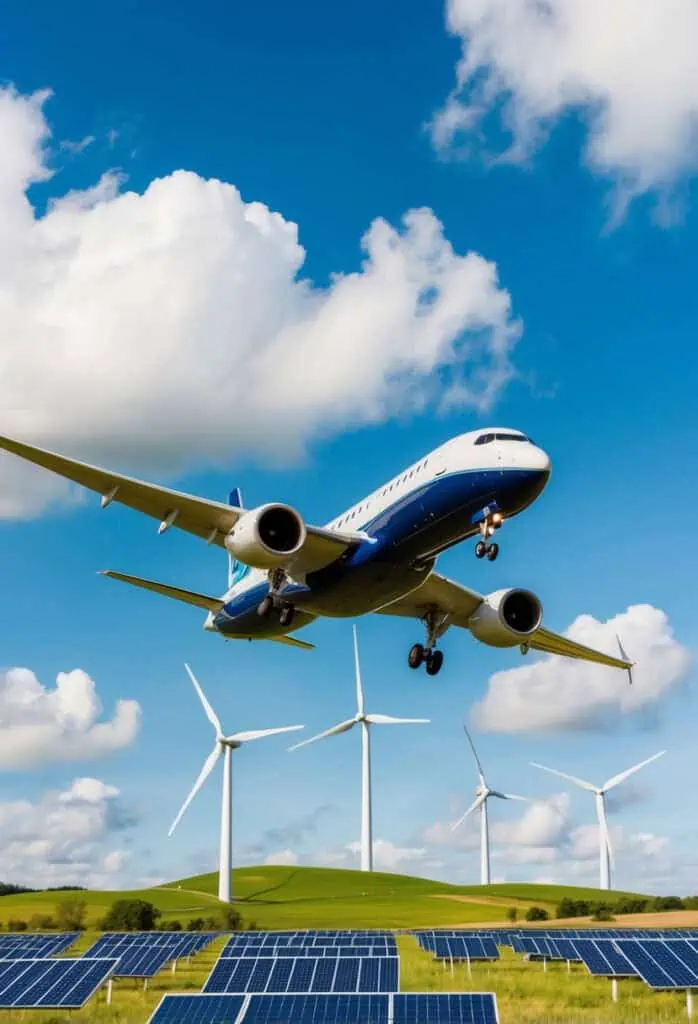
Air travel is becoming greener, thanks to new fuels and energy sources. These changes will help reduce flying’s environmental impact in the coming years.
Developments in Alternative Fuels
Sustainable aviation fuel (SAF) is a big step forward for cleaner air travel. It can cut CO2 emissions by up to 80% compared to regular jet fuel. SAF is made from used cooking oil, plant waste, and even captured CO2 from the air.
Airlines are starting to use more SAF in their planes. As more SAF is made, it will likely get cheaper. This could help it replace a lot of regular jet fuel in the future.
Some companies are also investigating other new fuels. Hydrogen is one option that could power planes without creating CO2. Electric planes are another idea being tested for short flights.
Investment in Renewable Energy
Airports and airlines are investing in clean energy to help the environment. Many airports now use solar panels to make some of their power, which helps cut their carbon footprint.
Some airlines are also investing in renewable energy projects. These projects produce clean power to offset flight emissions.
As renewable energy becomes cheaper, it could help make alternative plane fuels for less money, leading to more use of green fuels in the future.
Offsetting Your Air Travel Emissions
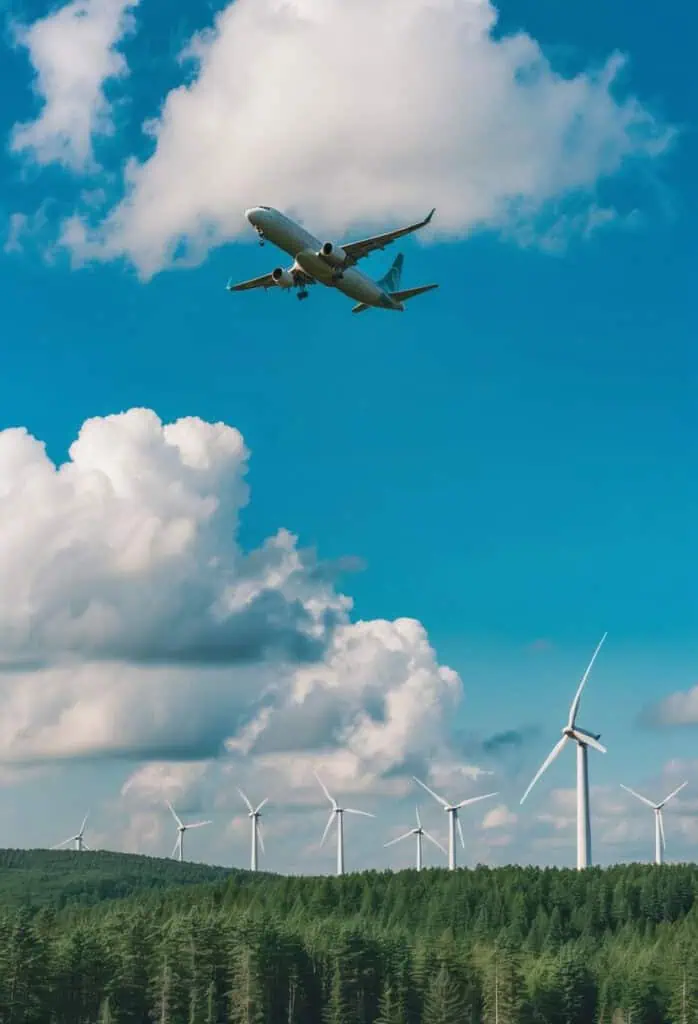
Carbon offsetting lets you balance out your flight’s emissions. You can invest in projects that reduce greenhouse gases elsewhere. This helps make up for the impact of your air travel.
The Basics of Carbon Offsetting
Carbon offsetting means paying to remove or avoid carbon emissions. For flights, you can buy offsets to match the CO2 your trip creates. Many airlines offer this when you book. You can also use outside companies. They figure out how much carbon your flight makes. Then, you pay to support eco-friendly projects.
These projects might plant trees or build solar panels. Some protect forests or give clean stoves to families. The goal is to cut greenhouse gases by the same amount as your flight, helping you become “carbon-neutral” for that trip.
Choosing The Right Carbon Offset Projects
Not all offset projects are equal. Look for ones that outside experts check. Good projects have clear goals and track their results. They should make a real difference in cutting carbon.
Some top choices:
- Renewable energy (wind, solar)
- Forest protection
- Clean cookstoves
- Methane capture from farms
Check if the project is certified. Labels like Gold Standard or Verified Carbon Standard are good signs. Pick projects that fit your values. Some help local communities and the planet. Read about the project before you buy. Make sure it’s doing what it claims.
Lifestyle Changes for Green Travelers
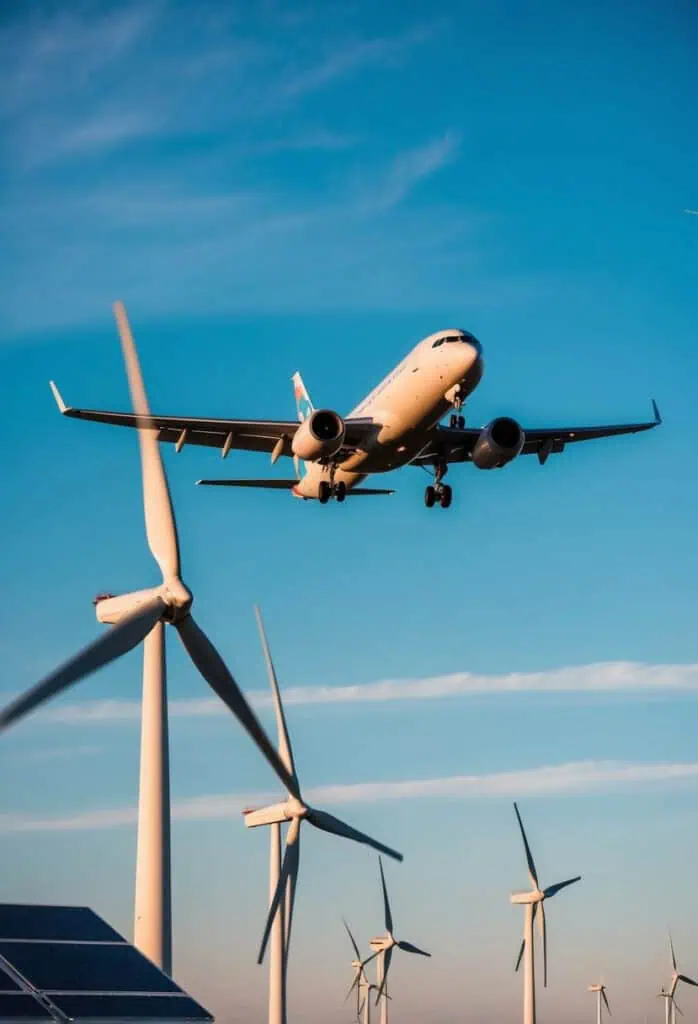
Making small shifts in how you travel can greatly impact the planet. Try these eco-friendly habits to reduce your carbon footprint while enjoying amazing adventures.
Adopting Slow Travel
Slow travel lets you see more while flying less. Take trains or buses between cities instead of planes. Stay in one place longer to get to know it. Rent a bike or walk to explore. You’ll have richer experiences and cut your emissions.
Try home exchanges or longer-term apartment rentals. Cook local foods at your rental to avoid eating out for every meal. Join community events to connect with locals. Take language classes to improve your skills.
Slow travel is perfect for digital nomads or retirees. But even on shorter trips, you can adopt a slower pace. Pick one region to focus on instead of racing between faraway spots.
Frequent Fliers Embracing Sustainable Tourism
If you fly often for work or fun, small changes add up. When possible, choose eco-friendly airlines and nonstop flights. Pack light to reduce plane weight and fuel use. Offset your flight’s emissions through verified carbon offset programs.
At your destination, choose green hotels and tour operators. Look for certifications like LEED or Green Globe. Use public transit or rent electric vehicles. Support local businesses and artisans.
Consider mixing in train trips or local getaways between far-flung flights. Video chat with distant colleagues sometimes instead of always flying for meetings. When you do fly, make each trip count by adding vacation days to work travel.
Incorporating Cycling and Walking into Journeys
Leave the car behind and explore on two wheels or two feet. Many cities offer bike-sharing programs that are perfect for tourists. Bring comfy shoes and discover hidden gems while walking. You’ll get exercise, save money, and cut pollution.
Book hotels in walkable areas near attractions. Try walking food tours to sample local cuisine. Join free walking tours led by locals to learn city history. Hike in nearby parks or nature reserves.
For longer trips, consider bike touring. You can cycle between towns, carrying your gear, or book guided cycling tours with your luggage transferred for you. Mix in train travel to cover more ground between bike rides.
The Role of Policy in Encouraging Sustainable Travel
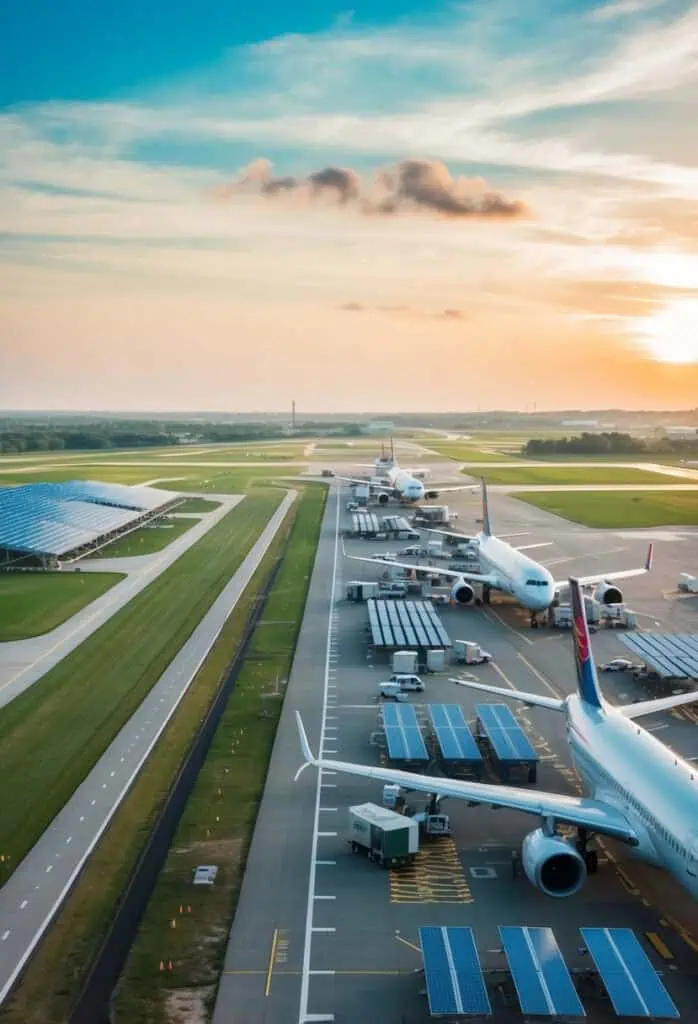
Policies play a big part in making air travel greener. They can push companies and travelers to cut down on pollution. Let’s look at what governments and businesses are doing to help.
Government Incentives and Regulations
Governments are stepping up to make flying cleaner. They’re using carrots and sticks to change how we travel. Here are some ways they’re doing it:
- Tax breaks for airlines that use cleaner fuel
- Rules that make planes more fuel-efficient
- Fees on flights that pollute a lot
These policies are making a difference. For example, some countries now charge more for domestic flights when trains are an option. This helps cut down on short trips by plane, which cause a lot of pollution.
Corporate Responsibility in the Travel Industry
Companies in the travel world are also pitching in. They’re finding ways to fly greener and help you do the same. Check out what some are doing:
- Offering carbon offset programs when you book
- Using more fuel-efficient planes
- Training pilots to fly in ways that save fuel
Airlines are getting creative too. Some give you points for choosing greener options. Others are testing new fuels that pollute less. These steps help you fly with less guilt about hurting the planet.
Community Actions and Global Movements
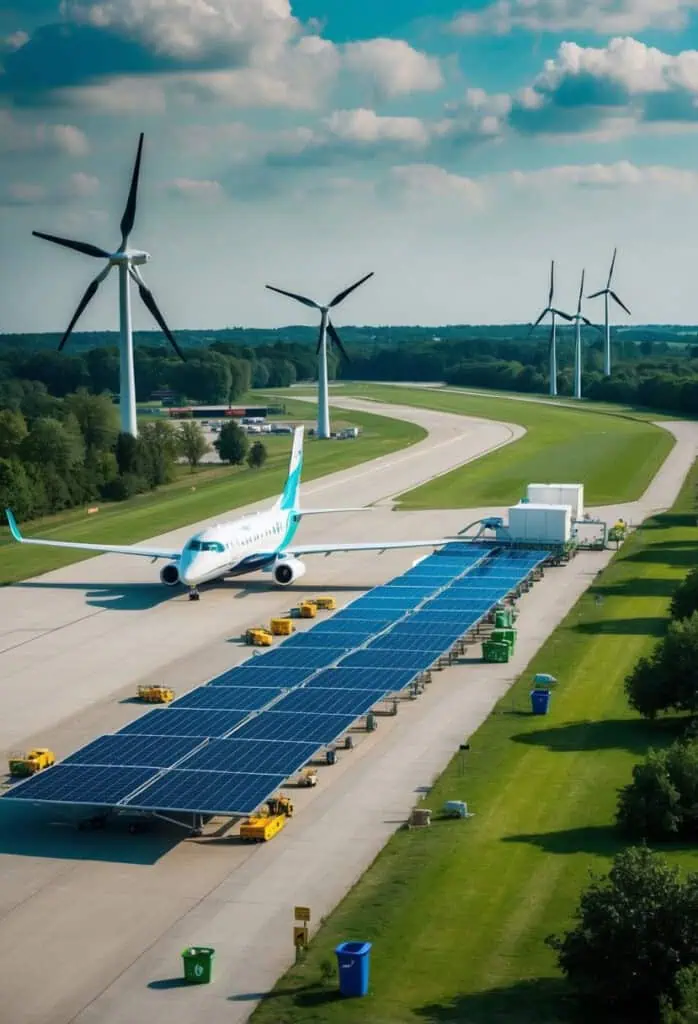
People around the world are taking steps to make air travel greener. Groups and individuals are working to raise awareness and change habits.
Grassroots Initiatives and Their Impact
Flight Free campaigns ask people to skip flying for a year. These efforts have spread to many countries. They show how small choices add up. Some travelers join “slow travel” movements. They choose trains or boats instead of planes when possible.
Local groups organize to push for better public transit. This gives more options besides flying. Airport communities fight for noise reduction. Their work often leads to less fuel use, too.
Online communities share tips for low-carbon trips, discuss ways to reuse and reduce waste when flying, and focus on avoiding single-use plastic on planes.
Influential Figures and Campaigns
The now infamous climate activist Greta Thunberg sparked global interest in “flygskam” or flight shame. Her train trips across Europe got people thinking. Other public figures now highlight their own eco-travel choices.
Celebs and influencers promote carbon offsets. They use social media to show greener ways to fly, and some partner with airlines to push for change.
Meanwhile, the hypocritical billionaire globalists take private jets to climate meetings while telling everyone not to fly. Do as I say, not as I do.
Travel bloggers share ideas for a circular economy in tourism. They show how to reuse items and support local communities. Their tips help you reduce your impact when you fly.
Scientists and experts speak at events about greener aviation, explain new tech, and advocate for policy changes. Their work helps shape the future of air travel.
Conclusion
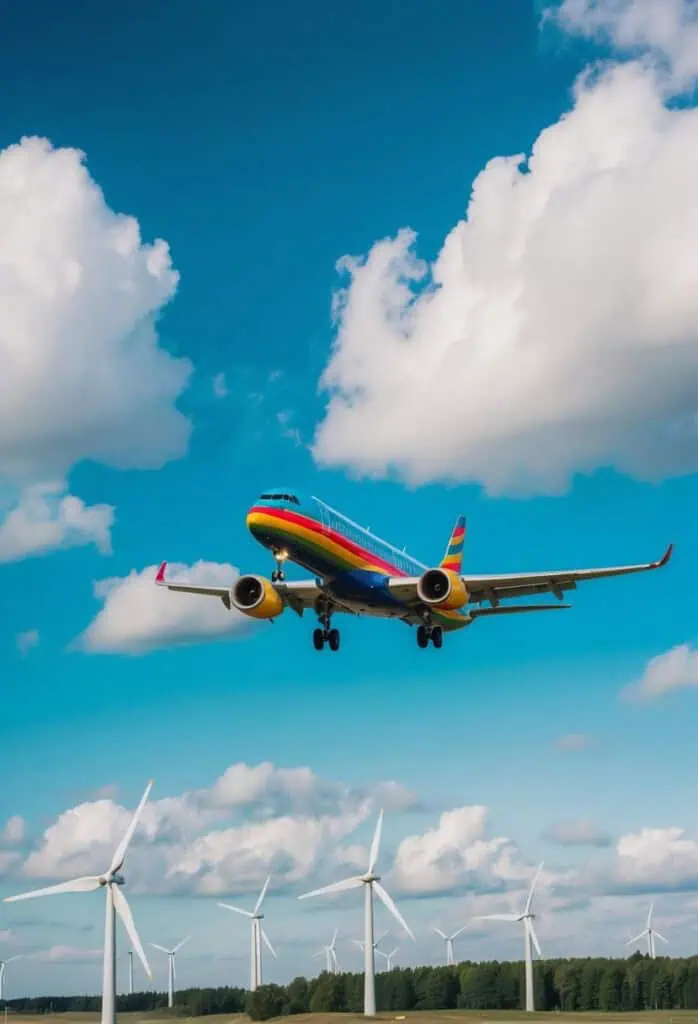
Flying can be tough on the environment, but you can reduce your impact by choosing airlines that use newer, more efficient planes, flying direct when possible, and packing light to decrease fuel use.
On the plane, keep your window shade down. This helps cool the cabin. Bring your own snacks and a reusable water bottle.
When you arrive, use public transport or walk to explore. Stay in eco-friendly hotels. Support local businesses that care about sustainability.
Remember, small choices add up. By being mindful of your travel habits, you can enjoy seeing the world while protecting it. Every eco-friendly decision helps create a cleaner future for air travel.
You have the power to make a difference. Your actions inspire others and push the industry towards greener practices. So next time you fly, think about these tips. Your journey can be both exciting and kind to our planet.

I have been traveling around the world by air since the early 70s and living overseas too. I worked for British Airways for a number of years and I am also a private pilot. About Me


